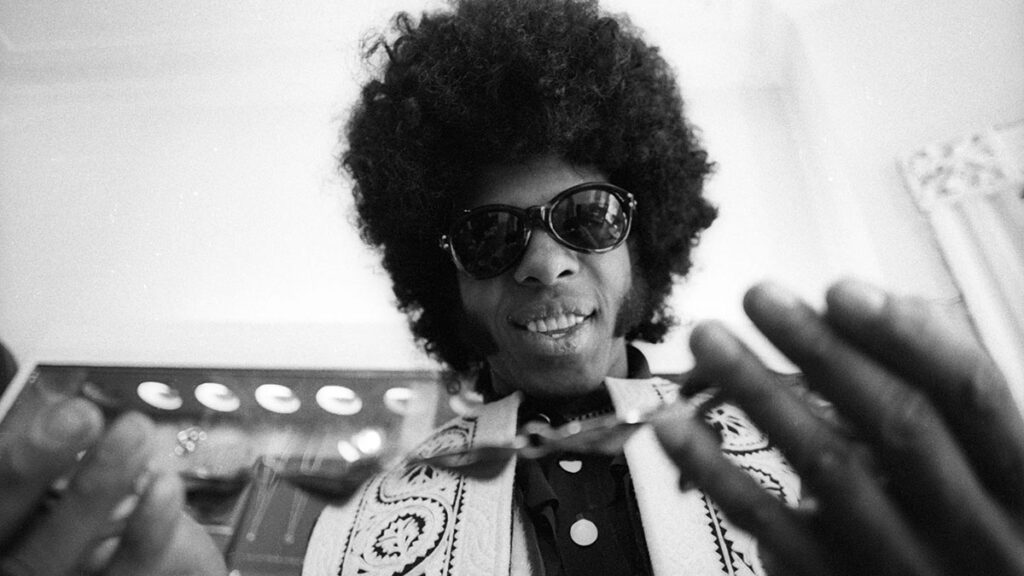Sly Stone, the legendary frontman of Sly and the Family Stone, passed away on June 9, 2025, at the age of 82. His family confirmed that the funk and soul pioneer died peacefully in Los Angeles, surrounded by his three children, closest friend, and extended family, after a prolonged battle with chronic obstructive pulmonary disease (COPD) and other underlying health issues. This blog post explores Sly Stone’s health struggles, the impact of COPD on his final years, and his enduring legacy as a musical icon.
Sly Stone’s Health Struggles and Battle with COPD
Sly Stone, born Sylvester Stewart on March 15, 1943, in Denton, Texas, had been grappling with health challenges for years, with COPD being the primary condition that defined his later life. COPD, a progressive lung disease that obstructs airflow and causes breathing difficulties, is often linked to long-term exposure to lung irritants such as smoking or air pollution. Symptoms include chronic coughing, breathlessness, and fatigue, which significantly impacted Stone’s quality of life in his final years.
By 2020, Stone’s health had deteriorated significantly. According to Sly Lives!, a 2025 documentary by Questlove, the funk legend struggled with motor functions, was unable to speak in full sentences, and had limited physical capacity, though his mental clarity remained intact. His decades-long battle with substance abuse, including cocaine and PCP, likely exacerbated his health issues, contributing to the progression of COPD and other complications. Despite these challenges, Stone remained a creative force, completing a screenplay for his life story shortly before his death, a project his family is eager to share with the world.
The Impact of COPD on Sly Stone’s Life
COPD is a devastating condition that affects millions worldwide, with the World Health Organization noting it as the third-leading cause of death globally, responsible for over three million deaths in 2019. For Stone, the disease meant a quieter existence in his later years, a stark contrast to his vibrant performances at Woodstock and Fillmore West during the late 1960s and early 1970s. The physical toll of COPD, combined with other health issues, limited his ability to perform or record new music, with his last album, Ain’t But the One Way, released in 1982.
Stone’s struggles with substance abuse, which he openly discussed in his 2023 memoir Thank You, also played a role in his health decline. His dependency on cocaine and PCP during the height of his career in the 1970s led to personal and professional challenges, including the dissolution of Sly and the Family Stone and a series of legal and financial troubles. These issues likely compounded the effects of COPD, making his final years particularly challenging.
Sly Stone’s Legacy with Sly and the Family Stone
Despite his health struggles, Sly Stone’s contributions to music remain unparalleled. As the leader of Sly and the Family Stone, formed in San Francisco in 1966, Stone revolutionized American music by blending funk, soul, rock, psychedelia, and gospel. The band was the first major American rock group to feature a racially integrated, mixed-gender lineup, breaking barriers during a time of social and racial tension. Hits like “Dance to the Music,” “Everyday People,” “Family Affair,” and “I Want to Take You Higher” became anthems of unity and celebration, influencing artists from Prince and Michael Jackson to Kendrick Lamar and OutKast.
The band’s innovative sound and message of racial harmony earned them a place in the Rock and Roll Hall of Fame in 1993. Stone’s ability to fuse genres and create a new language of music was praised by figures like Miles Davis and Herbie Hancock, who drew inspiration from his work. His fearless fashion—leather outfits, oversized sunglasses, and iconic Afro—made him a cultural icon, embodying the spirit of the 1960s and 1970s.
Sly Stone’s Family and Personal Life
Sly Stone was a family man, both in his music and personal life. Sly and the Family Stone included his siblings Freddie and Rose Stone, as well as cousins Greg Errico and Jerry Martini, creating a tight-knit musical unit. On a personal level, Stone was married to model and actress Kathy Silva from 1974 to 1976, with whom he had a son, Sylvester Jr. The marriage ended after an incident involving Stone’s pit bull, which attacked their young son, and Silva later noted Stone’s ongoing struggles with substance abuse. Stone is survived by his three children, who were by his side at the time of his passing.
His family’s statement, shared on Instagram and the Sly Stone Music website, expressed profound sadness but also pride in his enduring legacy: “While we mourn his absence, we take solace in knowing that his extraordinary musical legacy will continue to resonate and inspire for generations to come.” They also highlighted his recent creative efforts, including the screenplay, signaling that Stone’s creative spirit persisted despite his health challenges.
Remembering Sly Stone
Sly Stone’s death marks the end of an era for funk, soul, and rock music. Tributes have poured in from fans, artists, and media outlets, with figures like Kirk Franklin and Questlove honoring his revolutionary impact. The confusion on social media, where some mistakenly believed actor Sylvester Stallone had died, underscores Stone’s lasting cultural presence. His music, which captured the joy, struggle, and hope of an America in transition, continues to inspire.
As we reflect on Sly Stone’s life, his battle with COPD serves as a reminder of the importance of lung health and the devastating effects of chronic diseases. Early detection and lifestyle changes, such as quitting smoking and avoiding pollutants, can help manage COPD, though there is no cure. Stone’s legacy, however, is one of resilience and creativity, leaving behind a catalog of music that will forever define a generation.






